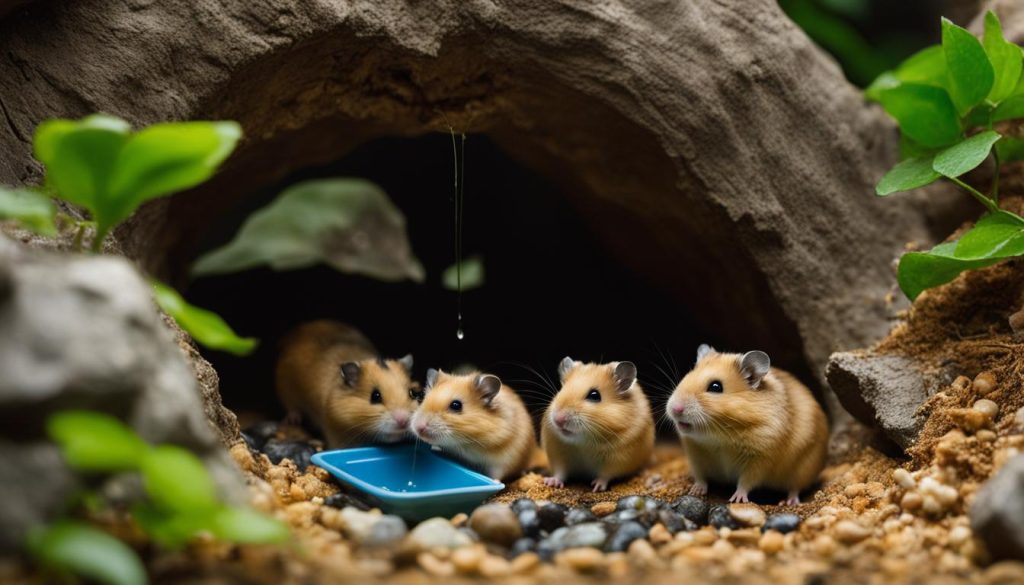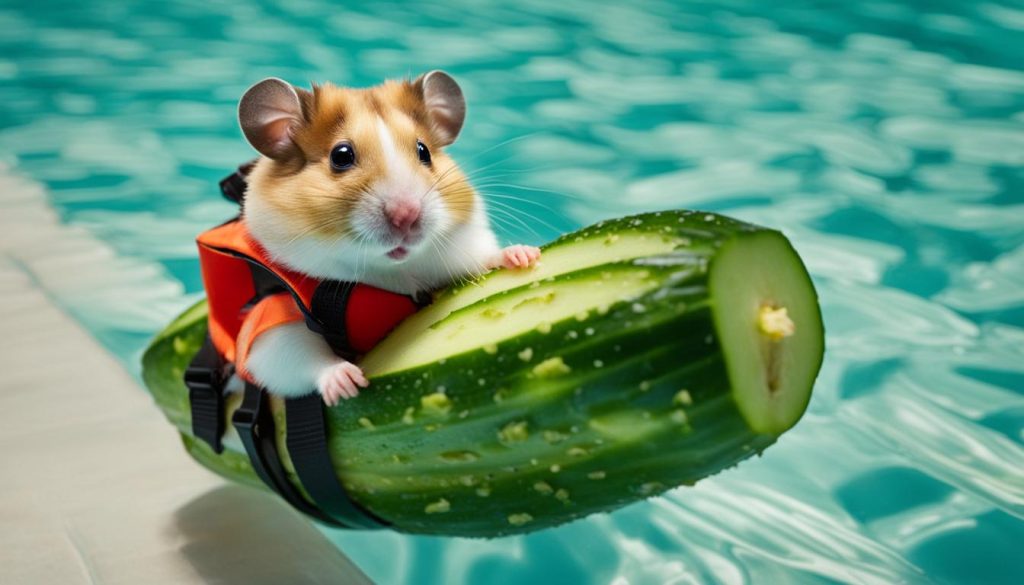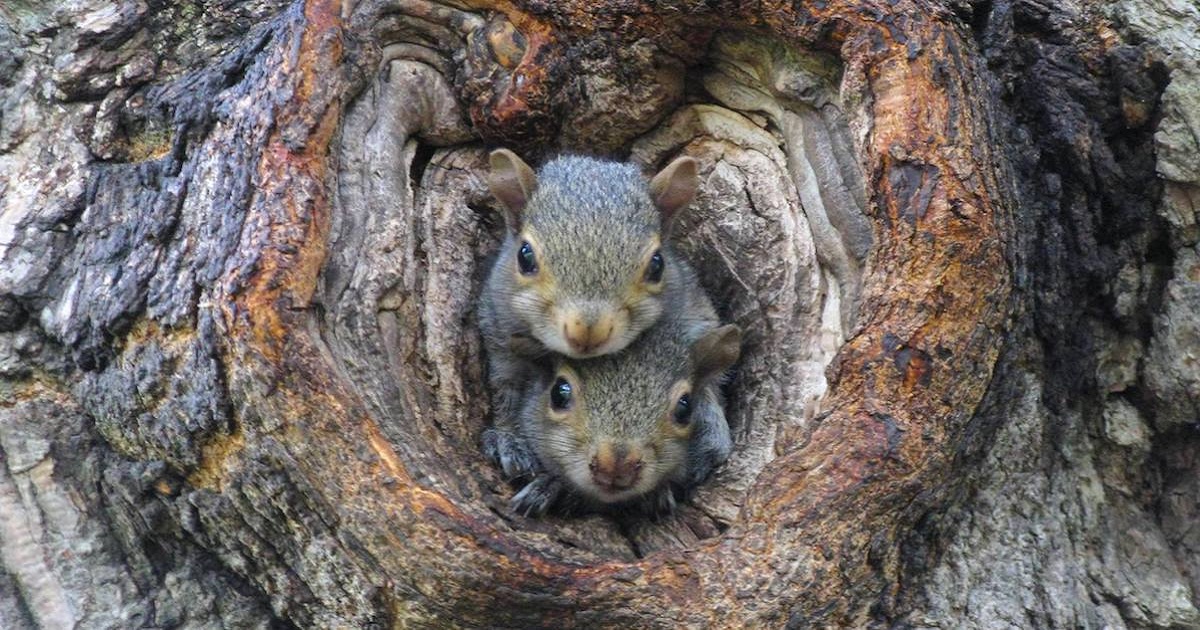Hamsters are fascinating little creatures, known for their adorable appearances and playful nature. As a pet owner, you may have wondered if these small rodents have any swimming capabilities. Well, the answer might surprise you! Let’s dive into the world of hamsters and swimming to discover the truth.
Hamsters, despite their preference for dry habitats and arid climates, are physically capable of swimming. However, it’s important to note that swimming is not a natural behavior for them. While they have the physical ability to navigate through water if necessary, hamsters do not naturally seek out water or enjoy swimming.
Can Hamsters Swim? Yes, they can, but they don’t like it.
- Hamsters are physically capable of swimming, but it is not a natural behavior for them.
- They have the ability to navigate through water but do not naturally seek it out.
- Hamsters prefer dry environments and may not enjoy being submerged in water.
- Swimming can lead to illness or distress for pet hamsters.
- It’s essential to prioritize water safety for pet hamsters and explore alternative grooming methods.
Hamsters’ Natural Habitat and Behavior
Hamsters are fascinating creatures that inhabit a wide range of habitats across Europe, Asia, and Northern Africa. These habitats include deserts, plains, sand dunes, and agricultural fields. With approximately 20 different species of hamsters, the most popular ones kept as pets are the golden or Syrian hamster and dwarf hamsters.
In the wild, hamsters exhibit unique behaviors that are adapted to their specific habitats. They are primarily nocturnal animals, meaning they are active during the night and rest during the day. Hamsters spend a significant amount of time in their burrows, which they diligently dig for protection, shelter, and sleep.
Hamsters are solitary creatures and fiercely territorial. They mark their territory using various methods, such as scent marking and aggressive displays. If another hamster intrudes upon their territory, they will often engage in confrontations, which can even lead to physical fights.
One interesting characteristic of hamsters is their high reproductive rate. Female hamsters have the ability to give birth to multiple litters each year, with each litter containing several pups. This rapid rate of reproduction allows hamster populations to thrive in their respective habitats.

Observing the natural behavior of wild hamsters provides valuable insights into their instinctual tendencies and requirements as pets. By understanding their natural habitat and how they adapt to it, we can create an optimal environment for our pet hamsters to thrive and feel at home.
Can Hamsters Swim and Do They Enjoy It?
Hamsters, despite their adorable appearance, have unique characteristics and behaviors. One common question among pet owners is whether hamsters can swim. Let’s explore hamsters’ swimming abilities and their preference for dry environments.
While hamsters have the physical ability to swim, they do not naturally seek out water or enjoy swimming. In their natural habitat, hamsters avoid large bodies of water and prefer to stay dry. This behavior is linked to their adaptation to dry environments.
If a hamster gets wet, it can lead to illness, such as cold or pneumonia. Hamsters have delicate respiratory systems, and exposure to water can be harmful to their health. Therefore, it is essential to keep hamsters away from water to ensure their well-being.
Hamsters have developed unique grooming habits to maintain their cleanliness without the need for water. They clean themselves using their saliva and other grooming techniques, effectively keeping their fur clean and free of dirt or debris.
As responsible pet owners, it is crucial to understand and respect hamsters’ natural behaviors and preferences. Avoiding water activities and providing a dry environment are key to ensuring their happiness and well-being.
Next, we will discuss the importance of water safety for pet hamsters and alternative grooming methods that are safe and beneficial for their health.
Water Safety for Pet Hamsters
When it comes to water activities for your pet hamster, safety should always be the top priority. While hamsters have the ability to swim, it’s important to understand that they are not naturally inclined to enjoy swimming like other water-loving animals. In fact, forcing a hamster into water can cause them significant distress and pose risks to their well-being.
One of the common misconceptions is bathing pet hamsters with water. However, this practice is not recommended as it can lead to stress, illness, and even drowning. Hamsters are adapted to dry environments and have grooming habits that allow them to clean themselves without the need for water. So, instead of exposing them to unnecessary risks, it’s best to focus on alternative grooming methods.
A safe and effective way to keep your pet hamster clean is by using chinchilla sand for a dust bath. Chinchilla sand works by absorbing excess oils and moisture from their fur, leaving them feeling fresh and clean. It mimics their natural behavior of rolling around in sand to maintain their cleanliness. Providing a small container filled with chinchilla sand for your hamster to explore and groom themselves in is a much safer and enjoyable alternative to water bathing.
By prioritizing the water safety of your pet hamster and avoiding bathing them with water, you can ensure their well-being and reduce the risks associated with swimming. Remember, hamsters are unique creatures with specific needs, and respecting their natural behaviors and preferences is key to keeping them happy and healthy.

Conclusion
Hamsters have the physical ability to swim, but they do not naturally seek out water or enjoy swimming. These adorable rodents are adapted to dry environments and have developed grooming habits that help them maintain their cleanliness without the need for water.
As responsible pet owners, it is essential to prioritize the safety and well-being of our hamsters by avoiding water activities and focusing on alternative grooming methods. While some small pets enjoy water play, it is important to understand that hamsters are not among them. Their preference for dry environments and their susceptibility to water-related illnesses make it crucial to keep them away from large bodies of water.
By respecting and understanding the swimming habits of hamsters, we can ensure the health and happiness of these delightful pets. Instead of introducing them to water, it is recommended to explore other grooming options such as chinchilla sand for dust baths. This allows hamsters to keep themselves clean and maintain their natural behaviors in a safe and stress-free environment. With proper care and attention, hamsters can thrive in their dry habitats without the need for water-related activities.
FAQ
Can hamsters swim?
Yes, hamsters have the physical ability to swim.
Do hamsters enjoy swimming?
No, hamsters are not naturally inclined to seek out water or enjoy swimming.
Can pet hamsters swim?
Pet hamsters have the same swimming capabilities as wild hamsters, but they typically do not enjoy swimming.
Can hamsters be submerged in water?
It is not recommended to submerge hamsters in water as it can lead to stress, illness, and even drowning.
What are the swimming habits of hamsters?
Hamsters are adapted to dry environments and prefer to stay dry. They avoid large bodies of water in the wild and do not naturally seek out swimming opportunities.
Is water safe for pet hamsters?
Water activities, such as bathing a pet hamster, can be risky and should be avoided. Hamsters are not naturally inclined to enjoy swimming, and forcing them into water can cause distress and potential health issues.






